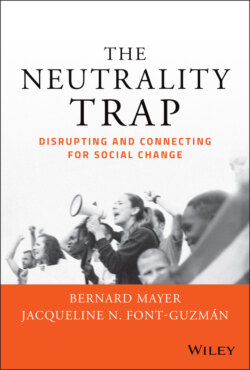Читать книгу The Neutrality Trap - Bernard S. Mayer - Страница 15
Mohandas Gandhi and the Salt March
ОглавлениеMohandas Gandhi was a master of disruption. One of the most important events in the struggle for Indian independence from the British Empire was the Salt March of 1930 (History.com Editors 2020). The Salt March was undertaken to protest the repressive and racist policy restricting who could manufacture or collect salt, but it was also an all‐encompassing protest against colonialism. Thousands of Indians joined with Gandhi on a 240‐mile march to the Arabian Sea where in defiance of the law they collected salt from tidal deposits. Gandhi was one of over 60,000 people who were arrested. This action exposed the viciousness and racism of British imperialism and led to widespread condemnation. Disruption occurred.
But what happened after Gandhi was released from prison about 7 months later (in January 1931)? Gandhi met with Lord Irwin, the Viceroy of India, and agreed to call off his nonviolent campaign in exchange for being provided an “equal” negotiating role at a conference on the future of India to be held in London later that year. The conference did not produce any significant agreements, but it established Gandhi and more importantly the movement that he led as an inescapable force that could not be ignored. More disruption followed (civil disobedience, repeated arrests, hunger strikes, mass demonstrations). More engagement and negotiations occurred as well. India achieved independence in 1947, but the struggle against the continued effects of colonialism, the caste system, and racism continue.
